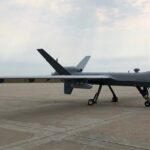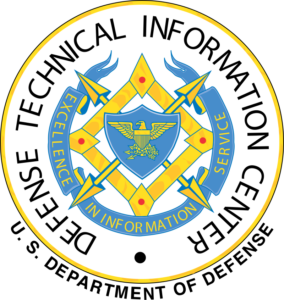
The U.S. Space Force plans to launch ground moving target indicator (GMTI) satellites in the next year for U.S. Indo-Pacific Command and then expand GMTI to other combatant commands, but, contrary to the thoughts of Defense Secretary Pete Hegseth who wants to move to space-based air moving target indicator (AMTI) satellites in the near term, it looks as if AMTI satellites are a longer term proposition.
Section 20003 of the fiscal 2025 reconciliation bill provides up to $2.2 billion for air moving target indicator (AMTI) satellites through 2029, while Section 20009 adds $100 million for ground moving target indicator (GMTI) satellites, yet the latter will precede AMTI in a U.S. Space Force, National Reconnaissance Office (NRO), National Geospatial Intelligence-Agency (NGA) effort.
The Air Force’s fiscal 2026 budget calls for scrapping a buy of the Boeing [BA] E-7 Wedgetail to replace the service’s 1970s era E-3 Airborne Warning and Control System (AWACS) planes and for the service to count on U.S. Navy E-2D Advanced Hawkeye aircraft, as the Air Force develops space-based AMTI.
House and Senate appropriators have rejected the Air Force’s Wedgetail plans–House legislators advising $500 million for Wedgetail in fiscal 2026 and senators recommending $847 million–a $647 million plus up from the Air Force request (Defense Daily, July 31).
“We’re really focused right now from an operator perspective, from COO, on GMTI–working very closely with the NRO and NGA,” Deputy Chief of Space Operations for Operations, Cyber, and Nuclear Lt. Gen. DeAnna Burt–the Space Force’s chief operations officer (COO), told a Mitchell Institute for Aerospace Studies forum on Monday.
“We are working together in the Joint Mission Management Center (JMMC) out [at the NGA headquarters] in Springfield [Va.] with NGA and building off their expertise in looking at moving targets and how do you pull multiple intelligence capabilities together to execute that,” Burt said. “We’ve designated [Space Force] Delta 7 as the lead delta to help us deliver ground moving target indicator. We have a small detachment of Delta 7 operators in Springfield working side by side with NGA on how we get after the tactics, techniques, and procedures; how we would do this. We’re also force presenting regional elements to each of the combatant commanders of how would those be force presented so each of the regional commanders when they are given their allocation on GMTI they would then be able to integrate those into their mission sets and task them directly–machine-to-machine tasking those, which would then come back to a global squadron, Delta 7-led, but now reporting to Space Forces-Space at Vandenberg [Space Force Base, Calif.] to then collate and bring all that together and act on behalf of the Joint Staff in how that allocation is divvied up among all the regionals.”
The concept of MTI satellites dates back to the 1990s. Space Force, the Air Force, and U.S. Northern Command are starting to test prototype AMTI satellites, and the GMTI satellites are to begin launching in the next year. GMTI satellites are to be the final launches in a string of a “larger family of satellites” collaboration between Space Force and the intelligence community. As a move toward GMTI, Space Force has begun launching electro-optical, “low-end” radar satellites, and Milnet communications satellites.
“Those initial [GMTI] satellites are beginning to launch, and how do we begin to execute those in real time is what we’re learning from right now,” Burt said on Monday. “Every bit of that learning on GMTI will apply to air moving target indicator. We are working with industry partners on what are the different phenomenologies that would allow us to attract air moving target indicators.”
Space Force is to complete an Analysis of Alternatives on AMTI this fall. AWACS and Wedgetail, in addition to their AMTI radars, are battle management platforms, and battle management remains a question mark for future space-based AMTI.
The AoA options “are gonna be very telling,” Burt said on Monday. “We believe it’s multiple phenomenologies. There’s no one silver bullet phenomenology that’s gonna do this…We are testing out those. Some of that additional [$2 billion in reconcilation] funding was how to do the RDT&E of these various capabilities and how to flush them out and see how they would operate and how you would put them together as a constellation and the data being provided machine-to-machine to compare different phenomenologies to be able to say, ‘That is an air moving target,’ and how would I then pass it to a combat controller working with aircraft or directly to the cockpit, as needed. GMTI–we’re learning how to take sensor-to-shooter data directly to the cockpit for moving targets on the ground. How do we learn from that and the technologies that emerge in this AoA to do the same thing from an air perspective?”
Asked whether Space Force could field space-based AMTI within two years, Burt said she could not provide a view as a non-acquisition officer, but said that “leveraging the commercial capabilities, I do think we have an opportunity to move faster as we find different technologies and different companies that are at different levels and how we would get those to work together will really be the key on how quickly we can deliver this at scale.”
On another tech effort, Space Force is addressing hiccups on its VICTUS SOL program.
Firefly Aerospace is to launch its Alpha rocket for VICTUS SOL–another mission in the Space Force Tactically Responsive Space (TacRS) portfolio (Defense Daily, Feb. 14).
In September 2023, Space Force’s Space Systems Command launched the VICTUS NOX TacRS mission. For that mission, a Firefly Aerospace Alpha rocket lifted a space domain awareness satellite by Boeing’s Millenium Space Systems into low-Earth Orbit.
VICTUS SOL “is meant to be a rendezvous proximity operations [RPO] capability that would be launched in response to a U.S. Space Command need,” Burt said on Monday. “We just went through the Resolute Space large force exercise in U.S. Indo-Pacific Command. We table topped all of that capability. The satellite wasn’t quite ready, but we are going to execute that in the fall timeframe.”
The Space Force wants to declare TacRS initial operational capability next spring after VICTUS SOL, she said.
Space Force has not identified the companies building the VICTUS SOL payload.
For VICTUS HAZE–another TacRS mission involving RPO–SSC, the Defense Innovation Unit, and SpaceWERX awarded contracts worth $32 million and $30 million to Rocket Lab and True Anomaly last year (Defense Daily, Apr. 11, 2024). SSC has said that VICTUS HAZE will show how the United States could use rendezvous and proximity operations to counter “irresponsible” adversary behavior on orbit.













